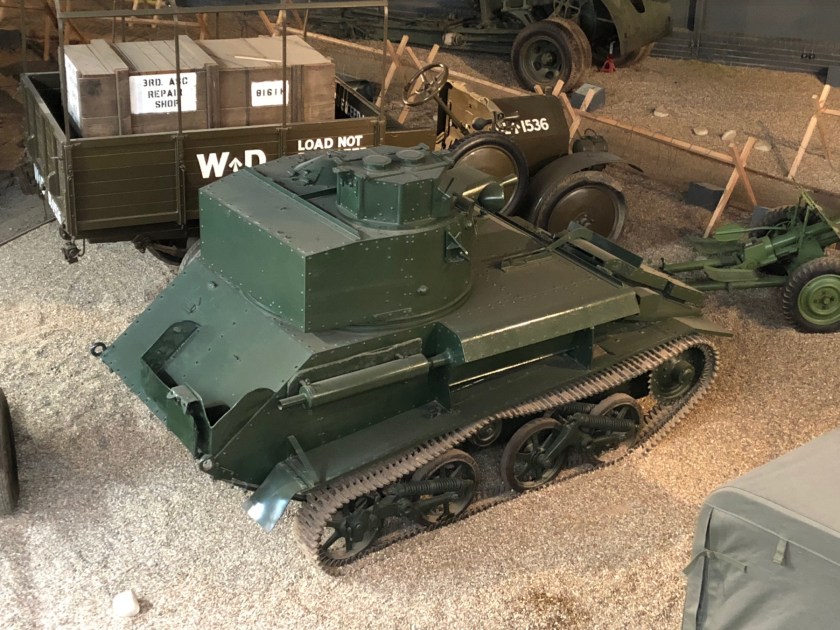The Vickers Mk VIA Light Tank was a British WW2 light tank, crew of 3, powered by Meadows 6-cylinder petrol engine, armed with two machine guns.

This one is on display at the Imperial War Museum Duxford. It was one of 11 sent to Australia in 1941 for training purposes Standard British light tank till 1941.

The Mk VI Light Tank was the sixth in the line of light tanks built by Vickers-Armstrongs for the British Army during the interwar period. The company had achieved a degree of standardization with their previous five models, and the Mark VI was identical in all but a few respects. The turret, which had been expanded in the Mk V to allow a three-man crew to operate the tank, was further expanded to give room in its rear for a wireless set.
The British Army lost 331 Mark VI light tanks in the Battle of France of 1940.
The Mk VIB was also used in the North African campaign against the Italians late in 1940 with the 7th Armoured Division.
Here are some 15mm Flames of War Light Tank VIs and a metal 15mm one of mine, which is badly painted.
In front of the tank is a Polish manufactured 3.7cm Bofors Anti-Tank Gun.

The 3.7 cm Bofors Cannon M/36P anti-rtank gun was a Swedish design that was developed in the mid-1930s, and was also manufacured in Finland. During the Second World war, it was used by Polish, Danish, and Finnish armies as well as the British. Captured examples were also used by the German Army, who designated it the 3.7 Panzerabwehrkanone 36(p) oder 157(d).
Behind the tank is a 1912 Italian – Fiat 15 ter 1.5 ton Light Truck.
















